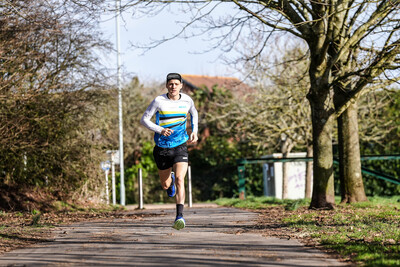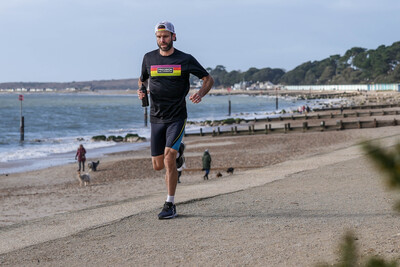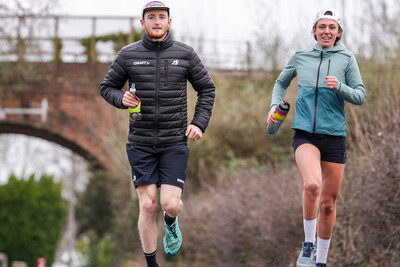Without realising it, a side effect of all of the time you spend training outdoors can be skin damage. To ensure you can keep training and competing comfortably and safely for years to come, LifeJacket Skin Protection have shared some skin care advice for athletes.
This article isn’t about how to get faster, quicker or better. And it’s not about marginal gains. The LifeJacket team believe everyday skin protection for athletes is just as fundamental as hydration, fueling and your choice of kit...
The effects of UV light
Your skin is your body’s largest organ. One of its main functions is to protect you against biological, physical and chemical aggressors.
As an endurance athlete, the most common everyday ‘aggressors’ include UV, pollution, dry/hot/cold air, harsh weather, smoke and stress.
They attack and damage your skin on a daily basis - often, without you noticing. Damage can include premature ageing, dryness, itchiness or sensitivity, to the more extreme cases of skin cancer, and several side-effects in between.

Ultra violet light is responsible for 80% of premature skin ageing and 90% of melanoma skin cancers.
Here’s the important bit of science most people don’t realise. While UVB is the wavelength of light that peaks in summer, burns your skin, and what most people focus on, UVA reaches your skin every single day and in equal measure throughout the year. It also accounts for 95% of the UV that reaches us on earth. So, as long as it’s light outside, UVA hits your skin – even through cloud and glass.
UVA penetrates the deeper layers of the skin meaning you can’t see the damage. It contributes to premature skin ageing and wrinkling by damaging the natural proteins under the skin’s surface. These proteins keep the skin tight and strong but, when damaged, can’t provide the same structural support.
For a long time, it was thought that UVA couldn’t cause any lasting damage other than these cosmetic changes, but studies strongly suggest UVA enhances the development of skin cancers because the rays also cause DNA damage in skin cells.
Skin cancer
At the extreme end of the skin damage spectrum is - of course - skin cancer.
Skin cancer is an uncontrolled growth of abnormal cells at different cell ‘sites’ within the skin structure. For example, melanoma develops when melanocytes (the cells that give the skin its pigment) start to grow out of control.
Split into melanoma and non-melanoma, the overall skin cancer ‘umbrella’ is one of the most common cancers in the world and it’s growing. According to the Global Cancer Observatory (part of the World Health Organisation), there are just over 18 million new cancer cases diagnosed globally each year and 10 million cancer related deaths.
Skin cancer (melanoma and non-melanoma) accounts for 7% of all new cases, meaning there are 1.3 million new skin cancer diagnoses each year, across the world.
Establishing past trends is difficult, new skin cancer cases have increased by 50% in the USA and UK over the past decade. By 2040, World Health Organisation forecasts suggest that the annual number of global skin cancer diagnoses will increase from 1.3 million (today) to just under 2.5 million. Almost double.
Of all the new cases diagnosed each year, there’s a huge bias towards Europe which accounted for just under 40% of cases despite only representing 7% of the world’s population.
Within Europe, the countries with the highest levels of skin cancer incidence per capita are Scandinavia, Poland, Switzerland, the Netherlands and the UK.
Skin cancer and men
Something that’s often missed is that just under 40% more men die of skin cancer than women. This is the global average.
However, 40% is just an average.
In several countries, male skin cancer mortality rates are nearly double those for women.
In simple terms, this means that almost two men die of skin cancer for each woman who suffers from the same disease. Countries where this is the case are Australasia, North America, Scandinavia, and the UK, amongst many, many others.
Skin cancer and endurance athletes
Given what you just read about UV light - not just in terms of its daily prevalence but the damage it can cause - it becomes apparent that the more time you spend outside, the greater your risk of skin damage.
There have been studies looking into marathon runners' or other endurance athletes’ probability of getting skin cancer versus the average population but the sample size is often too small to draw conclusions.

Instead, we prefer to stick to the science we know. That’s to say, ultraviolet light is classified as a human carcinogen by the World Health Organisation, it’s responsible for 90% of melanoma skin cancers and finally, every sunburn increases your risk of getting skin cancer. So, as an endurance athlete you should ensure exposed skin is protected when outside - whether you’re training or not and regardless of geography or time of year.
On a positive note, according to the Melanoma Research Foundation and Cancer Research UK, melanoma is between 86-90% preventable.
7 ways you can protect your skin
Here are some practical tips to help you protect your skin...
1. Moisturise daily
The skin’s top layer is called the epidermis. It’s a waterproof barrier between your body and the big wide world. It’s the skin layer where drying takes place. And this is key.
Healthy skin contains ~30% water. Each day, it loses about one pint but you probably lose more. When the skin’s water content drops below 10%, dryness, flaking and itching begins. This leads to redness, cracking and inflammation: signs you might personally recognise.
Why does this happen?
Cells in the epidermis are held together by a lipid-rich glue made up of natural oils. When the glue is weakened, water loss (and its consequences) accelerate. Things that cause the glue to lose its grip include: sun damage, over-cleansing, scrubbing, underlying medical conditions and, of course, winter conditions.
It’s also worth mentioning that the epidermis gets thinner with age, often due to the cumulative effect of sun damage. Thinner skin doesn’t retain moisture as well. On top of this, natural oil production slows with age.
While dry skin is clearly not life-threatening, it’s a nuisance, doesn’t look great and can give rise to complications like eczema or infections (don’t forget the main role of the epidermis!).
To manage this, moisturise daily. Use an SPF moisturiser every morning to protect you from incidental UV rays as you go about your day. Top up if you’re still feeling dry or find yourself outside for longer than expected.
2. Never forget sunscreen
Given UV is ever present, the temperature outside or time of year doesn’t matter. So, for any long sessions outdoors – any time of year – use a good sunscreen before heading outside on all exposed skin. We recommend a minimum of SPF 30 and the European UVA kite-mark (or UVA 4-5). Reapply every two hours and don’t forget your lips, nose, back of the neck and ears – commonly missed spots where endurance athletes can burn.
3. Use UPF kit
Another way to protect the skin is by wearing a physical barrier that blocks attack (i.e. clothing).
But beware – not all fabrics are created equal. For example, a white cotton t-shirt is the equivalent of SPF 5 and you could feasibly burn through it.
Ultraviolet Protection Factor (UPF) is to fabrics what SPF is to sunscreen. It’s a measure of how much UV protection the fabric provides. Denim is UPF 1,700 so it’s highly protective but impractical. Look out for UPF 50+ active and running wear. It’s a good option if you don’t like running with cosmetic creams on your skin.
4. Protect your bonnet
It might get hot but your head’s a sitting duck under strong sun. That’s even more true if you’re bald or have a close cut on top. Wear a beanie or cap. There are breathable, lightweight, UPF 50+ variants out there. It’s a whole lot better than a sunburnt head or sun stroke.

5. Wear sunglasses more often
For the same reason, it’s ideal to protect your skin from UV every day, we should probably all wear sunglasses more often than we think.
Even on a cloudy day, UV levels can be high. Sunglasses with UV400 protection (or which have the CE kite mark) are a critical piece of kit. Avoid low quality lenses which can cause more harm than good as you in this post on eye protection.
6. Skin recovery
Help your skin repair and recover after a long day outside.
Try to shower as soon after your run as possible to avoid pores getting clogged. After a shower, use your moisturiser to re-seal the outer barrier.
Moisturisers can do two things depending on their ingredients: form a layer to block water leaving or try and add water to the epidermis. Applying straight after a bath or shower seals in moisture while your skin is damp. Don’t forget about your hands and body – they definitely won’t say no to a daily layer of added moisture. This is about looking and feeling better but that doesn’t make it any less important.
7. Check moles
Every 2-3 months, you should check your skin for moles or marks that are changing. Any changes can be a concern: look for growing size, changing shape, new colours, bleeding, pain, crusting, red around the edges or itching. It's far better to have things checked early and quickly, rather than let skin problems linger. Don't be afraid about wasting a doctor's time - they would prefer you spoke to them.
*For endurance athletes looking to improve how they look after their skin, you can get 10% off your first order of LifeJacket Skin Protection products by using the code PRECISION. *
